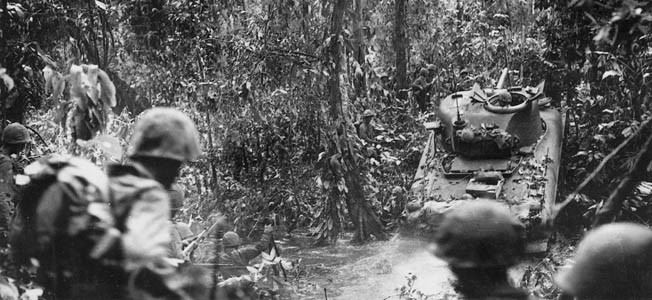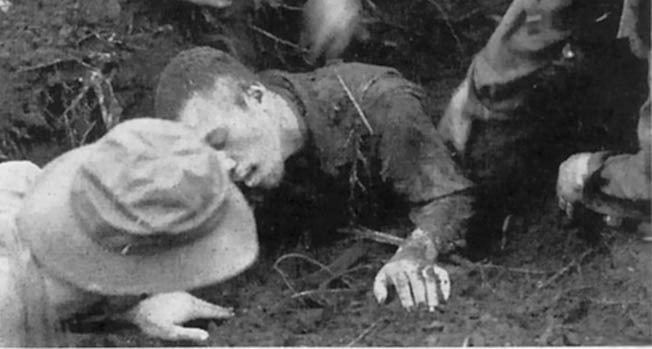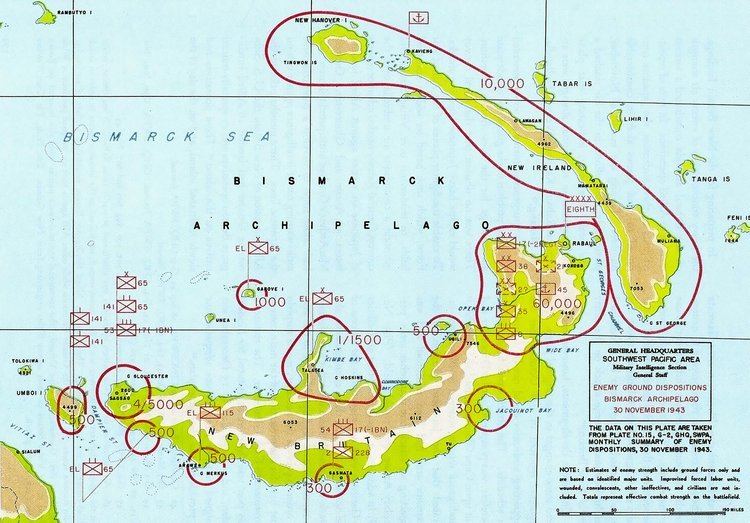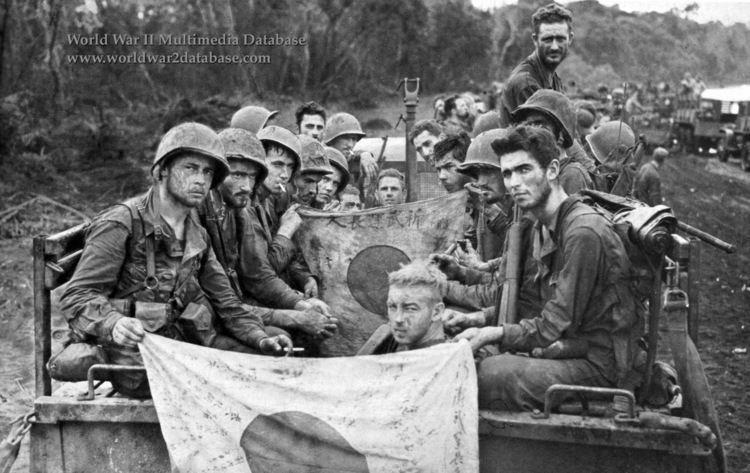310 killed1,083 wounded 1,000 killed Result Allied victory | Dates 26 Dec 1943 – 22 Apr 1944 | |
 | ||
Similar | ||
The worst part of being on cape gloucester as recalled by rv burgin
The Battle of Cape Gloucester was a battle in the Pacific theater of World War II between Japanese and Allied forces which took place on the island of New Britain, Territory of New Guinea, between late December 1943 and April 1944.
Contents
- The worst part of being on cape gloucester as recalled by rv burgin
- Wounded us soldiers carried to a landing craft beached in cape gloucester new bri hd stock footage
- Objectives
- Operation
- Aftermath
- References

The battle was a major part of Operation Cartwheel, the main Allied strategy in the South West Pacific Area and Pacific Ocean Areas during 1943–44, and was the second World War II landing of the U.S. 1st Marine Division, after Guadalcanal.

Wounded us soldiers carried to a landing craft beached in cape gloucester new bri hd stock footage
Objectives

The main objective of the American and Australian allies was the capture and expansion of the Japanese military airfield at Cape Gloucester. This was to contribute to the increased isolation and harassment of the major Japanese base at Rabaul. A secondary goal was to ensure free Allied sea passage through the straits separating New Britain from New Guinea.
Operation

Supporting operations for the landings in Cape Gloucester began on 15 December, when the U.S. Army's 112th Cavalry Regiment was landed at Arawe on the south-central coast to block the route of Japanese reinforcements and supplies from east to west and as a diversionary attack from the future Cape Gloucester landings.
The Marines were opposed by the Japanese 17th Division, commanded by Major General Iwao Matsuda, which was augmented by "Matsuda Force"—the 65th Infantry Brigade and elements of the Japanese 51st Division. Matsuda's headquarters was at Kalingi, along the coastal trail northwest of Mount Talawe, within five miles (eight kilometres) of the Cape Gloucester airfield.
The main operation began on 26 December with a naval barrage on the Japanese positions on Cape Gloucester by U.S. Navy and Royal Australian Navy (RAN) warships, followed by air attacks by planes from the U.S. Army Air Forces (USAAF) and Royal Australian Air Force (RAAF). These attacks and an aerial smoke screen were followed by the landing of the U.S. 1st Marine Division, at Yellow Beach 1 & 2 and Green Beach, under the command of Major General William H. Rupertus. The Marines faced swampy terrain and thick jungle, but met only rear-echelon Japanese troops.
Aftermath
After the operation, the main body of the Matsuda Force continued to resist Allied offensives on mainland New Guinea.
